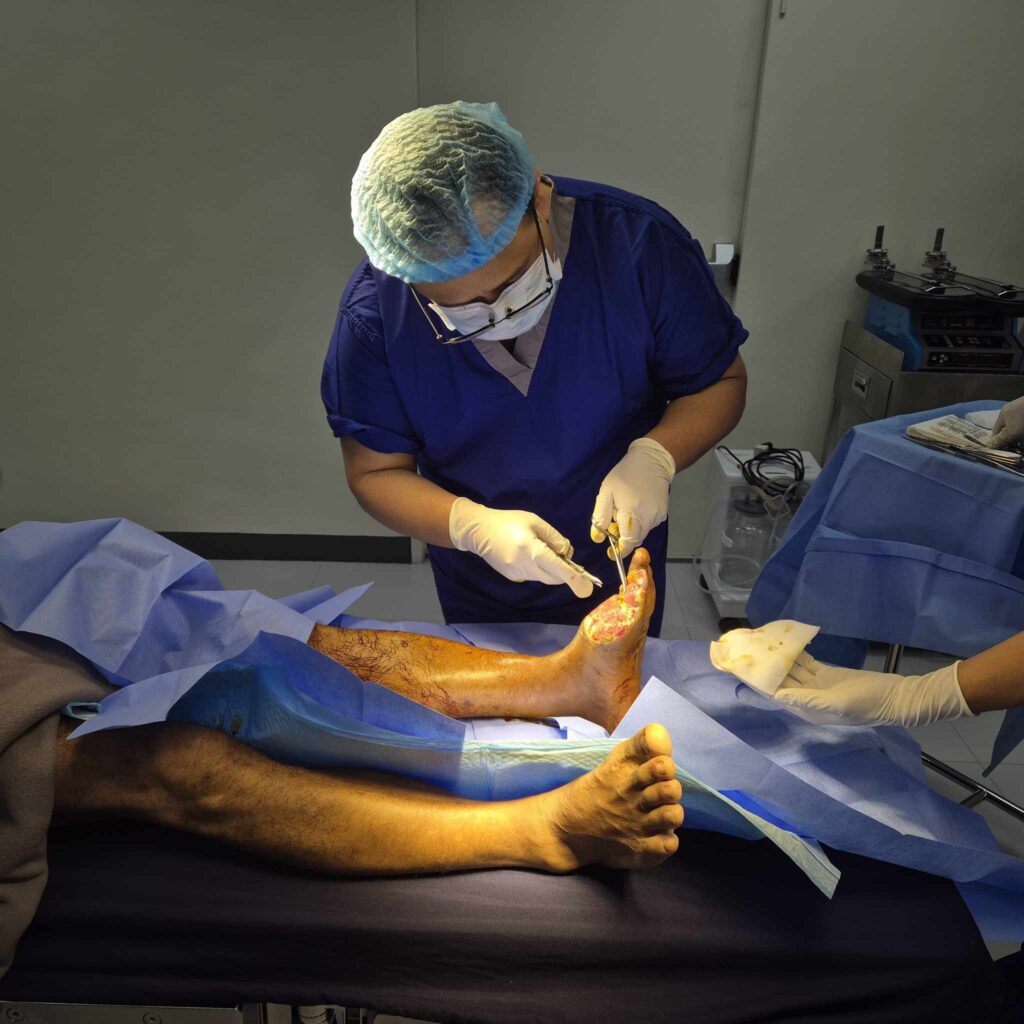Hip pain can make even the simplest daily activities challenging. Walking, climbing stairs, or enjoying time with family can feel impossible when hips are stiff, painful, or damaged. Hip replacement surgery offers a reliable solution for restoring mobility and improving quality of life. Patients who struggle with chronic hip pain often find relief and renewed independence through surgical procedures that restore joint function. Hips and Knees Joint Restoration and Replacement Center in the Philippines provides international patients with access to world-class hip surgery at a fraction of the cost found in countries like the USA, Australia, New Zealand, and the UK. With experienced surgeons, advanced surgical techniques, and personalized care, patients regain comfort and confidence in movement.
Hip replacement surgery is more than a medical procedure; it is a chance to reclaim freedom and participate fully in daily life. For those seeking an affordable and effective solution for hip problems, traveling abroad for surgery can provide timely access to care, shorter wait times, and a focus on patient-centered recovery.
Causes and Symptoms of Hip Problems
Hip problems often arise from conditions such as osteoarthritis, rheumatoid arthritis, fractures, and hip dysplasia. Osteoarthritis causes the cartilage in hips to break down, leading to stiffness, swelling, and chronic pain. Rheumatoid arthritis can trigger inflammation in the joint, making movement difficult. Hip fractures, often caused by falls or accidents, require prompt treatment to prevent long-term mobility issues. Hip dysplasia, a condition where the hip joint develops improperly, can cause discomfort and limited range of motion.
Symptoms signaling the need for hip evaluation include persistent pain while walking, difficulty climbing stairs, stiffness in the hip joint, limping, and reduced range of motion. Pain may worsen over time, and patients may notice difficulty performing routine tasks such as putting on shoes, standing for long periods, or bending. Recognizing these warning signs early allows patients to explore treatment options, including hip replacement surgery, before the condition worsens.
Types of Hip Replacement Surgery
Hip replacement surgery can be categorized into total and partial procedures. Total hip replacement involves replacing both the ball and socket of the hip joint with artificial components. This approach is suitable for patients with severe hip damage or advanced arthritis. Partial hip replacement involves replacing only the damaged portion of the joint, often used for specific fractures or localized hip damage.
Minimally invasive techniques, especially the Direct Anterior Approach (DAA), have revolutionized hip surgery. This technique allows surgeons to access the hip joint through a small incision at the front of the hip, reducing muscle disruption and accelerating recovery. Patients undergoing DAA hip replacement often experience less post-surgical pain, smaller scars, and faster return to walking and daily activities. The DAA approach also allows patients to regain full hip function more quickly compared with traditional methods, making it an attractive option for those seeking both efficiency and comfort during recovery.
Advantages of Choosing the Philippines for Hip Surgery
The Philippines has become a preferred destination for patients seeking hip replacement abroad due to a combination of affordability, expertise, and high-quality medical facilities. Hip replacement packages in the Philippines are typically 50–70% less expensive than in the USA, Australia, New Zealand, and the UK. This cost advantage allows patients to access world-class care without the financial strain associated with surgery in their home countries.
Surgeons at Hips and Knees Joint Restoration and Replacement Center, including Dr. Tec, have extensive experience performing hip surgeries using advanced techniques such as DAA. Modern facilities, patient-focused care, and comprehensive recovery support ensure that patients have a safe and comfortable experience. International patients also benefit from the warmth and hospitality of the Filipino healthcare environment, creating a supportive atmosphere during the entire surgical journey.
Choosing the Philippines for hip surgery also means timely access to procedures. Patients often face long wait times in their home countries, which can prolong discomfort and reduce mobility. Scheduling surgery abroad allows patients to address hip problems promptly, begin rehabilitation sooner, and return to active life more quickly.
Patient Journey at Hips and Knees Joint Restoration and Replacement Center
The journey begins with a consultation to assess the condition of the hips and determine the most suitable surgical approach. During this step, surgeons evaluate the severity of joint damage, discuss surgical options, and provide personalized recommendations for recovery. International patients receive guidance on travel arrangements, accommodations, and logistics to ensure a smooth experience from start to finish.
Once the consultation is complete, patients can schedule surgery within a few weeks. The surgical team provides detailed instructions to prepare for the procedure, including preoperative assessments, imaging, and tests to ensure safety. On the day of surgery, patients receive expert care from a specialized team, with attention to comfort, safety, and precision. The use of minimally invasive techniques such as DAA allows patients to begin moving sooner and experience less post-operative discomfort.
Post-surgery care is an integral part of the recovery process. Patients receive tailored rehabilitation plans, including guided exercises to restore strength and mobility in the hips. Telemedicine follow-ups allow surgeons to monitor recovery, adjust rehabilitation strategies, and address patient questions remotely. Comfortable accommodations and supportive care ensure that patients can focus on healing without stress or interruptions.
Benefits of Hip Replacement Surgery
Hip replacement surgery offers multiple benefits, including relief from chronic pain, improved mobility, and the ability to return to daily activities with confidence. Patients often experience enhanced independence, as tasks such as walking, climbing stairs, and bending become easier and less painful. Restoring proper hip function allows individuals to resume hobbies, social activities, and work responsibilities without limitations caused by joint problems.
Minimally invasive hip surgeries provide additional advantages. Smaller incisions reduce scarring and post-operative discomfort, allowing patients to recover faster. Patients undergoing DAA hip replacement often report shorter hospital stays and quicker return to walking. Improved mobility and comfort can also have emotional benefits, boosting confidence, reducing stress, and improving overall quality of life..
Takeaway
Hip replacement surgery provides a powerful solution for chronic hip pain, limited mobility, and decreased quality of life. Patients seeking an effective, affordable, and minimally invasive approach often choose to have surgery abroad. Hips and Knees Joint Restoration and Replacement Center offers advanced surgical techniques, experienced surgeons, and patient-focused care to help individuals restore comfort, regain mobility, and participate fully in life once again. Traveling for hip surgery allows patients to access timely procedures, comprehensive recovery support, and personalized guidance, all while saving costs.
If hips are limiting your daily activities or causing persistent pain, consider consulting specialists who can guide you through safe and effective treatment options. Regaining movement and enjoying life without hip pain is possible with modern surgical solutions and dedicated care.
Frequently Asked Questions About Hip Surgery Abroad
How long does recovery take after hip replacement?
Recovery varies depending on the type of surgery and patient health, but many patients begin walking with assistance within a day or two. Full recovery typically takes several weeks to months, with guided rehabilitation supporting strength and mobility.
What is included in the hip replacement package?
Packages usually include the surgical procedure, hospital stay, preoperative assessments, post-operative care, rehabilitation guidance, and accommodations suitable for recovery.
Are complications common?
While hip replacement surgery is generally safe, as with any procedure, risks exist. Surgeons carefully evaluate patients to minimize risks, and proper post-operative care reduces the likelihood of complications.
Can international patients travel back home after surgery?
Yes. Recovery plans account for safe travel. Surgeons provide guidance on timing, precautions, and follow-up care to ensure safe travel after hip surgery.
What makes the Direct Anterior Approach different?
The Direct Anterior Approach involves accessing the hip joint through a small incision at the front of the hip. This method reduces muscle disruption, promotes faster recovery, and allows patients to regain mobility sooner than traditional hip replacement approaches.
Is hip surgery affordable abroad?
Yes. Many patients save 50–70% on hip replacement surgery in the Philippines compared with costs in the USA, Australia, New Zealand, or the UK, without compromising quality or care.






